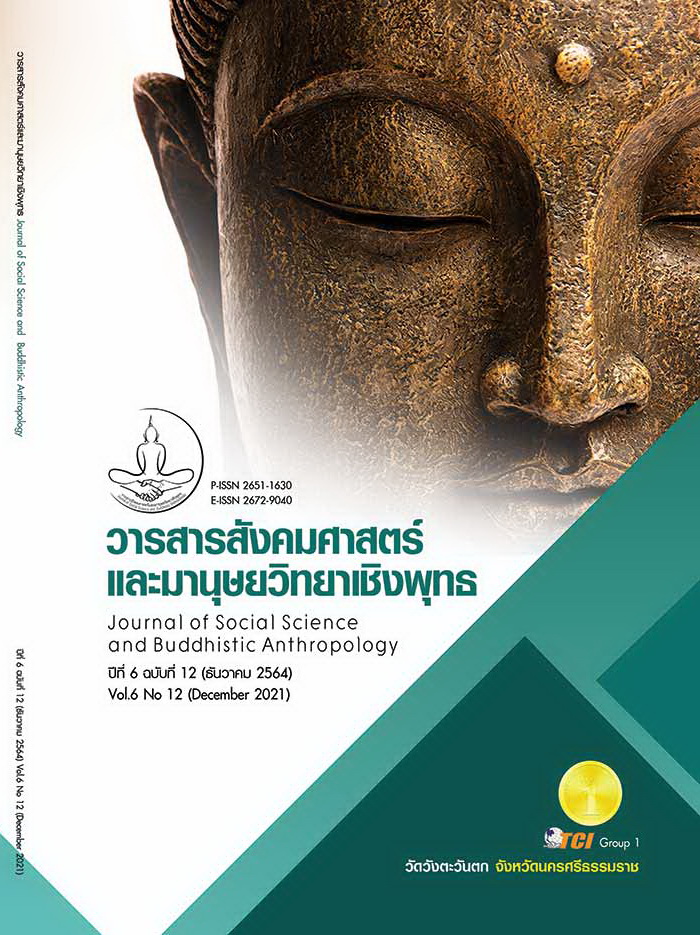THE DEVELOPMENT OF A CREATIVE WEAVING PATTERN OF KOH YOR: DEVELOPMENT OF KOHYOR FABRICS IN THE BRANDING OF THE PRODUCT AND THE PROTOTYPE.
Keywords:
Development, Pattern, KohYor woven fabric, CreativeAbstract
The objective of this research is to develop the features of fabric, patterns, texture, and style of woven cloth product from KohYor in order to develop the KohYor woven cloth in a new look by using the development approach that does not affect traditional weaving since KohYor woven cloth was originally woven into the fabric with the smooth surface like normal woven cloth. This research is considered as a guideline for the development of pattern of woven fabrics and KohYor woven products. The research is qualitative research conducted from the contents, literature, articles, and the field visit to interview the KohYor woven fabric group in various dimensions combined with the design thinking process.
The research results reveal that the development of KohYor woven pattern cloth form the pattern of woven fabrics and textures that have dimensions from different types of thread materials in different sizes and weaving techniques. The thread weaving is used as fancy thread to make woven pattern which is free and colorful including having the embossed skin. Using twisted thread mixed with thread in different sizes makes the woven fabric have a different level of embossed texture. The use of fluff thread makes the fabric look fluffy. Using special thread mixed with the fabric makes the woven fabric shiny and has the touch of skin including the flower pattern in the same piece. The researcher still maintains the standing thread and the traditional pattern to preserve the traditional weaving style of Koh Yor in order not to affect the traditional way of weaving of the assembly group to be the model of woven fabrics and apparel products for the weaving group of Rom Sai Textile, Mueang District, Songkhla Province.
References
คณะกรรมการอำนวยการจัดงานเฉลิมพระเกียรติพระบาทสมเด็จพระเจ้าอยู่หัว. (2545). วัฒนธรรมพัฒนาการ
ทางประวัติศาสตร์ เอกลักษณ์และภูมิปัญญาจังหวัดสงขลา. กรุงเทพมหานคร : กรมศิลปากร
ดิสนีย์ สิงหวรเศรษฐ์. (2552). ออกแบบสิ่งทอ. กรุงเทพมหานคร : โรงพิมพ์โอเดียนสโตร์.
นวลแข ปาลิวนิช. (2542). ความรู้เรื่องผ้าและเส้นใยฉบับปรับปรุง. กรุงเทพฯ : สำนักพิมพ์ซีเอ็ดยูเคชั่น
สำนักงานเหล่ากาชาดจังหวัดสงขลา. (2547). ผ้าทอสองนที ผ้าเนื้อดี...ผ้าเกาะยอ. สงขลา : โรงพิมพ์เอสพริ้นท์
มหาวิทยาลัยศิลปากร. (2543). ผ้าทอพื้นเมืองในภาคใต้. ในโครงการพัฒนาผ้าพื้นเมืองในทุกจังหวัดประเทศ.
มหาวิทยาลัยศิลปากร.
วิบูลย์ ลี้สุวรรณ. (2530). ผ้าไทย พัฒนาการทางอุตสาหกรรมและสังคม. กรุงเทพมหานคร : โรงพิมพ์อมรินทร์
พริ้นติ้งแอนด์พับลิชชิ่ง.
วิบูลย์ ลี้สุวรรณ. (2550). สารานุกรมผ้า เครื่องถักทอ. กรุงเทพมหานคร : สำนักพิมพ์เมืองโบราณ.
ศิริพร สุระวิโรจน์. (2545). ผ้าทอเกาะยอกับภูมิปัญญาชาวสงขลา. กรุงเทพมหานคร : โรงพิมพ์ไทยวัฒนา
พานิช.
Syne Mitchell. (2015). Inventive Weaving on a Little Loom Discover the Full Potential of the
Rigid-Heddle Loom for Beginners and Beyond. North Adams : Storey Publishing.
Yasir Nawab, Syed Talha Ali Hamdani, Khubab Shaker Y. (2017). Structural Textile Design
Interlacing and Interlooping. Boca Raton : CRC Press.
ยมนา สินธุรัตน์. (28 ต.ค.2558). แนวทางการการพัฒนารูปแบบการทอผ้าเชิงสร้างสรรค์. (นวัทตกร อุมาศิลป์
, ผู้สัมภาษณ์)
สุวรรณี รักวิจิต. (30 ต.ค.2558). แนวทางการการพัฒนารูปแบบการทอผ้าเชิงสร้างสรรค์. (นวัทตกร อุมาศิลป์,
ผู้สัมภาษณ์)
ASCENTIAL WGSN. (2014). FASHION TREND 2015. 12 พฤศจิกายน 2557 จาก www.wgsn.com








